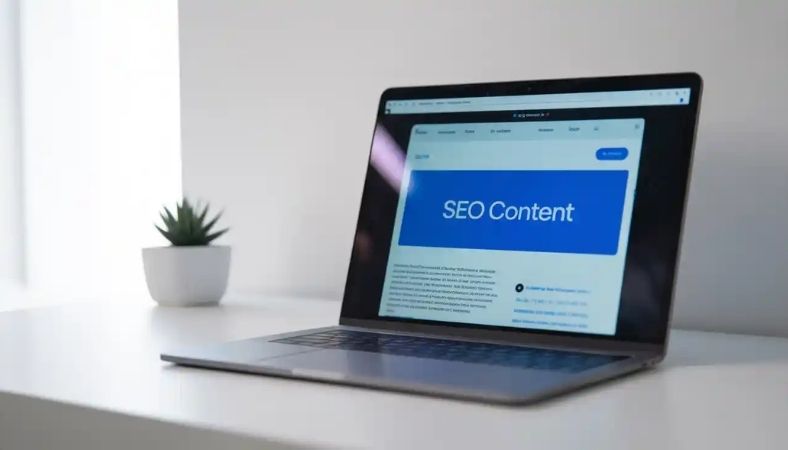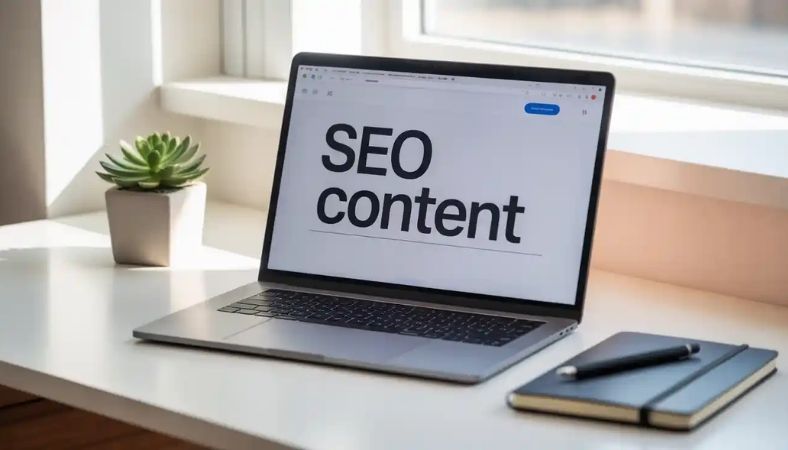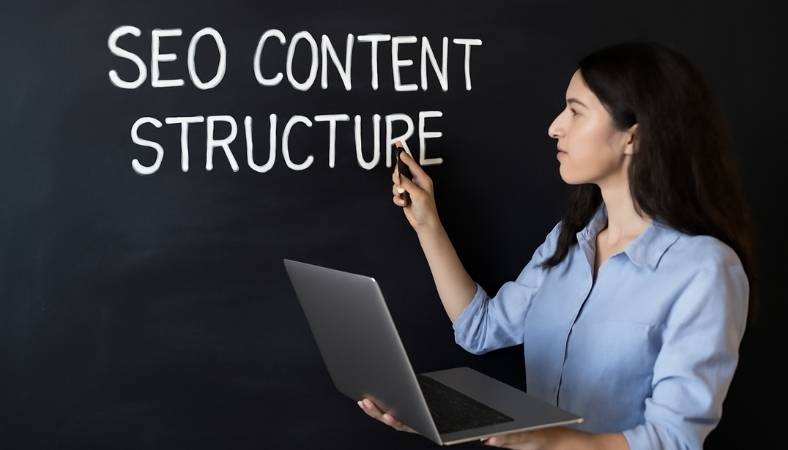Introduction
In our digital world, content is king. Although to stand out in search engine results, more effort is needed aside from producing high quality content. How your content is arranged and organized is important in your success. That is where SEO Content Structure comes to play. Internal linking is the process of linking one page of your website to another page within the same domain.
How a certain piece of content is arranged and formatted in order to improve its performance in search engines is called SEO Content Structure. Having a good structure improves Google’s ability to scrape, index and rank your content in a user-friendly way, thus improving the overall experience.
In this article, I will discuss the importance of SEO Content Structure, as well as providing actionable steps on how to optimize your content to be more effective. Regardless of your level of expertise in digital marketing, this guide will help you craft search-engines and users friendly content.

Why SEO Content Structure is Important for Success
Building SEO-friendly content goes beyond placing keywords randomly into the text. A properly structured arrangement of content improves search engine recognition and ranking. Properly structured content will:
- Make it easy for search engines to crawl and index your pages.
- Users have seamless and enjoyable usability when engaging with your content.
- You are able to compete with the most sought-after keywords.
Improving the content organization of your website will lead to better SEO results and an increase in organic site visitors.
What is SEO Content Structure?
SEO content structure pertains to the configuration of the material found on your web page to ensure that it is easy for search engines to effectively crawl, index, and rank the content. When your page is well structured, search engines stand a better chance of grasping the hierarchy of your content which increases the chances of being ranked for relevant keywords.
Key Elements of SEO Content Structure:
- The Headings and Subheadings (H1, H2, H3 tags) act as guides for users and search engines through ones content in a guide.
- Users benefit from Internal Linked pages since other relevant pages improve the distribution of link equity and improve crawlability.
- The specialized services provided by both Bullet Points and Lists simplify to scan sections of webpages improving readability.
- Organizing information improves navigation for users and streamlines processes for search engines.
Functions of Headings in SEO Content Architecture
Headings play a crucial role in organizing your content in a user-friendly and SEO compliant way. When used correctly, headings and subheadings assist search engines in grasping the main topics of your page. Additionally, they segment the content into easier portions for your readers to consume.
Key Points:
- Use H1 for the main title: This is the primary heading that tells search engines what your content is centered on.
- H2 for major subtopics: As H2 tags mark the essential parts of your articles, ensure to title the main sections as these to aid users and search engines.
- H3 for further details: Use H3 tags when deeper exploration into a subtopic is required to provide detailed content.
Benefits of Using Proper Headings:
- Make the content easier to read and scan.
- Help to strategically optimize your content for relevance.
- Improve rankings with SEO by conveying importance of keywords.

Keyword Functions in SEO Content Structure
Strategically placing keywords is an integral part of SEO content structure. Conversely, refrain from cramming keywords into your content. Instead, LSI (Latent Semantic Indexing) and other associated words can be utilized to give the text a more fluid and engaging tone.
Where To Include Keywords:
- Insert main keywords in the introduction: This informs readers and search engines what to expect from the article.
- Integrate keywords into the body, headings, and subheadings: Remember to keep a balance and use the keywords naturally.
- Use related keywords: Terms that are tangentially relevant to the primary keyword.
Combining primary keywords with supporting terms helps to shape the content which is easy to grasp for users as well as search engines.
For SEO, Content Length And Structure
The length can influence article rank. Although there is no definitive answer to this problem, the amount of words a webpage contains, it is expected that cover more topics in depth.
Strategy For Structuring Long Form Content
- Introduction (150-200 words): the most compelling part of any writing is the hook
- Body: Divide your text into H2 and H3 chapters for easier access and readability.
- Conclusion (150-200 words): encapsulate the most important lessons alongside guidance and recommend further engagement
For better engagement, include informative visuals, bullet lists, and tables.
Long-form content fosters increased user dwell time on the page, which can improve the SEO ranking.
Internal Linking: Improving Your Content’s Organization
Internal linking is a basic SEO content structure element. It is a hyperlink that connects relevant pages within a website. By relating hyperlinks to other content, the web’s usability increases, and so does the comprehension of the content’s hierarchy by search engines.
Benefits of Internal Linking:
- Useful for ranking SEO: With internal links, search engines are able to find new information and link it’s relevance with other information.
- Enhances Customer Experience: Internal linking through webpages assists users to navigate through and find pertinent sections with ease.
- Distributes Trust Pass: Helps spread page authority through your site.
While crafting content, remember to create bookmarks to add other relevant articles, blog posts, or product pages from your site.
Readability: Formatting using Bullet Points, Lists, Short Sentences and Paragraphs
One of the key building blocks of SEO content structure is the ease of reading. Stretching out the content into large pieces of text would be a lot to absorb for most users. Use bullet points, number lists, and keep your paragraphs short to help make the piece more readable.
Helpful Reading Strategies:
- Bullet Points: Explain complicated theories or ideas using easy to understand bullet points, design.
- Encourage concise writing: Every paragraph should center on one key concept so readers easily follow along.
- Include visuals: Pictures, infographics, and graphs can make your content easier to read and more interesting to interact with.
Using Other Forms of Text to Add Value
Images, videos, and infographics are different forms of text that can be used to add value and make your text more appealing. Doing this will help the reader and at the same time, it will improve SEO through increased user engagement.
How to Effectively Use Multimedia:
- Write descriptive alt text: Describe images so that readers understand what is being said.
- Reduce file sizes: Use smaller images so that they do not slow down the loading speed of the page.
- Add videos and infographics: Such texts can improve engagement and the time users spend on your page.
In looking at both user engagement and SEO optimization, multimedia is certain to play a key role.
SEO Content: Why Real-Life Examples and Case Studies Matter
Real world illustrations and case studies are important as they show how effective the SEO content strategies are. Businesses that use a well-designed structure and place their content methodically benefit from better ranked pages and increased traffic.
Case Study:
- After restructuring their content, XYZ Corporation updated its headings, internal links, and indexed them. Within three months, their organic traffic rose by 25%.
- The examples above confirm that having a well-defined content layout directly improves search positions and user engagement.
Improving Content Structure: Use Analytics for Insights
Make sure to routinely evaluate the overall performance of your website to see how users engage with your content. Google Analytics and Google Search Console are tremendous assets when it comes to evaluating the performance of your SEO content structure.
Key Metrics to Track:
- Bounce Rate: Lower bounce rates are generally linked to valuable content.
- Average Time on Page: If people stay longer on your page, it increases the chance that they find your content useful.
- Click-Through Rate (CTR): If your headlines and meta descriptions are persuasive, a higher CTR should be expected.
A better understanding of these metrics enables you to adjust the content structure to better align with user expectations.
Common Mistakes Made in SEO Content
Chronic over optimization: stuffing keywords, using complex site structures and underestimating the value of links brand marketers make repetitively group unoptimized and poorly responsive sites within the mobile structure neglected optimization junction mobile.
Ignoring what users intend to do when searching online results completely defeats the concept of avoiding an answer. These users however make any simple alterations to maintaining that structured chaotic balance preserves fundamentally intact content logic.
FAQs about SEO content structure
How does SEO content structure impact search rankings?
Having a content page organized properly helps with the search engine’s processes of crawling and understanding the page which increases the evaluations.
What are LSI keywords, and why are they important?
Related terms that assist the search engines to comprehend the relevance of information are called LSI (Latent Semantic Indexing) keywords, and they are crucial for improving semantic SEO.
How long should my content be for SEO purposes?
In most cases, long-form content wins, but it is better to always prioritize quality. In most cases the optimal range lies between 2000–2500 words.
Should I use images in my SEO content?
Absolutely. Multimedia aids in better engagement to users and better SEO, though it is important to optimize images for fast loading.
How do I track the performance of my SEO content?
In monitoring key metrics such as bounce rate, average time on page, and CTR, Google Analytics and Google Search Console are good options.
Conclusion
To sum it up, properly structuring and organizing content helps with ranking high on search engines while keeping a good user experience. Prioritizing proper layout, keyword usage, internal linking, user participation, and content value will yield great results.
Invest your time in outlining your content strategically and witnessing the improvements in rankings as well as audience growth.

